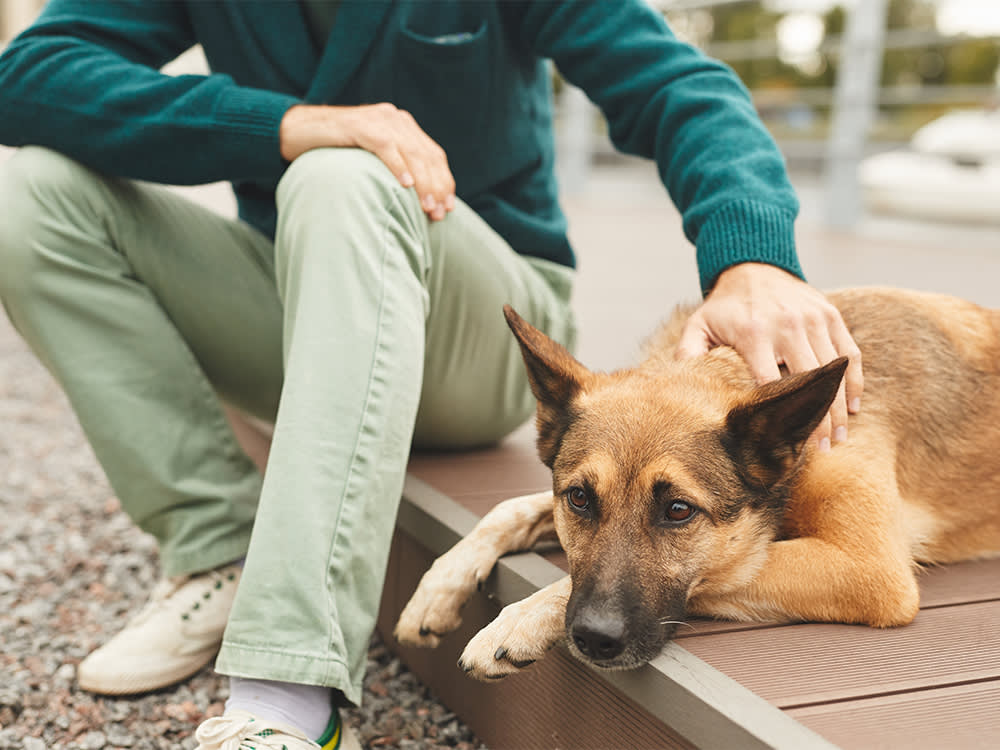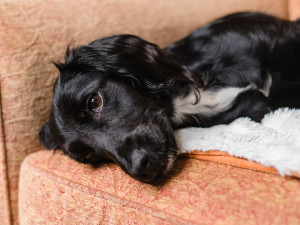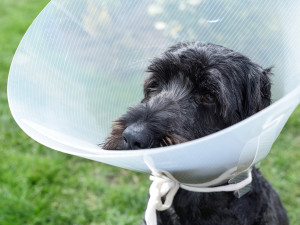Gut Feelings: Dogs Get Constipated Too
What to do when your pup can’t poop.
Dog butts are a big part of my job. I take rectal temperatures, collect stool samples, and perform digital rectal exams. I have lengthy conversations with dog owners about what is (or isn’t) coming out of their dog’s butt. It’s all in a day’s work as an emergency relief veterinarian.
You’re probably reading this because you’re worried about your dog’s butt — and the fact that poop is not coming out of it. Maybe you’re concerned because your dog is straining when they go to the bathroom. Or maybe your pup is staring at you uncomfortably because he hasn’t done number two in two days. Either way, you’ve come to the right place. Let’s talk about dog constipation.
What constipation looks like in dogs
To get technical: constipation is the infrequent or difficult passing of stool. Symptoms of constipation in dogs commonly include straining without success, crying or vocalizing while defecating, or simply not pooping at all. Here’s the confusing part: straining can also be a symptom of diarrhea (confusing, I know). Dogs with diarrhea can experience colonic spasms, making them feel the urge to defecate even if their colon is empty. They’ll posture to poop, but not produce much.
I get a lot of calls from pet parents about dog constipation, but nothing compared to the number of concerns about dogs straining due to diarrhea. How do I know? This is where sticking my finger up dog butts comes in handy. Don’t worry — my job. But how can you know? If your dog already pooped and is still straining, chances are colonic spasms are to blame. Needless to say, the best way to know for sure is to have your pup checked out by your veterinarian.
What causes constipation in dogs
Dehydration
Dogs that are dehydrated for reasons like low water intake or fluid loss from vomiting are at risk of becoming constipated. Underlying medical conditions like kidney disease and diabetes in dogs can also leave pups with a higher risk of developing dehydration and electrolyte abnormalities.
Eating bones or other poorly digested material
I had a client who thought it was no biggie to share chicken wings with his Pit Bull on Super Bowl Sunday. This poor pup suffered horribly painful constipation and had to be hospitalized for treatment with enemas and IV fluids. I get it — those puppy dog eyes will make you want to cave and share your chicken dinner. Don’t do it.
Physical obstructions
An enlarged prostate can put pressure on a dog’s colon and lead to straining and constipation. Older, intact male dogs are more at risk of developing prostatitis, which can be benign, infectious, or cancerous. Tumors can also cause physical obstructions. To avoid some of these risks, neuter your male dog.
Arthritis, injuries, etc.
While constipation itself is painful, underlying pain can also cause constipation. Arthritis, back pain, and hip injuries may make the simple act of popping a squat agonizing for your dog. Other causes of constipation in dogs include recent anesthesia or narcotics, neurological disease, poor grooming/hygiene, obesity, a hernia by the rectum, and lack of exercise.
What you should do if you dog is constipated
Do increase water intake. Maintaining hydration is key to treating and preventing constipation. Canned diets have a high water content, so feeding wet food an easy way to increase water intake. And make sure your pup has access to plenty of water.
Do increase fiber intake. Just like with people, fiber adds bulk to stool, which leads to better BMs. Canned or puree pumpkin or fiber supplements like Metamucil are simple sources of fiber that vets often recommend.
Do check under the tail. This won’t be pretty but longhaired dogs can get clumps of old poop tangled in the fur near their anus that actually block new poop from coming out. A sneak peek can mean the difference between a trip to the groomer or a trip to the vet.
Do walk your dog. Get your dog moving to get their gut moving. If your pup is feeling up to it, some gentle exercise can help stimulate the intestines to move things along more quickly.
Do take your dog to the vet. As always, taking your dog to the vet is the fastest way to find out what’s going on with them. X-rays can reveal the severity of the constipation. Enemas, fluid therapy, or medications may be needed if at-home remedies aren’t doing the trick.
What you shouldn’t do if your dog is constipated
Don’t use scissors to remove said clump of poop from under your dog’s tail. It’s too easy to accidentally cut their skin — open wounds and fecal matter are not a good combination. Instead, take your pup to the groomer or vet.
Don’t try to DIY an enema. This will be an unpleasant (and potentially dangerous) experience for you and your dog. Let the pros be the bad guys for this one. Cool, right?
Don’t give your dog over-the-counter stool softeners or other medications as a home remedy without consulting with your vet. Dogs metabolize things differently than we do, so stick to prescriptions unless advised otherwise by your vet.
Don’t ignore the problem for too long. Untreated constipation can progress to obstipation — a serious form of constipation that won’t respond to medication or diet. In such extreme cases, dogs must be anesthetized to manually remove very dry, very hard stool. More fingers in butts.




